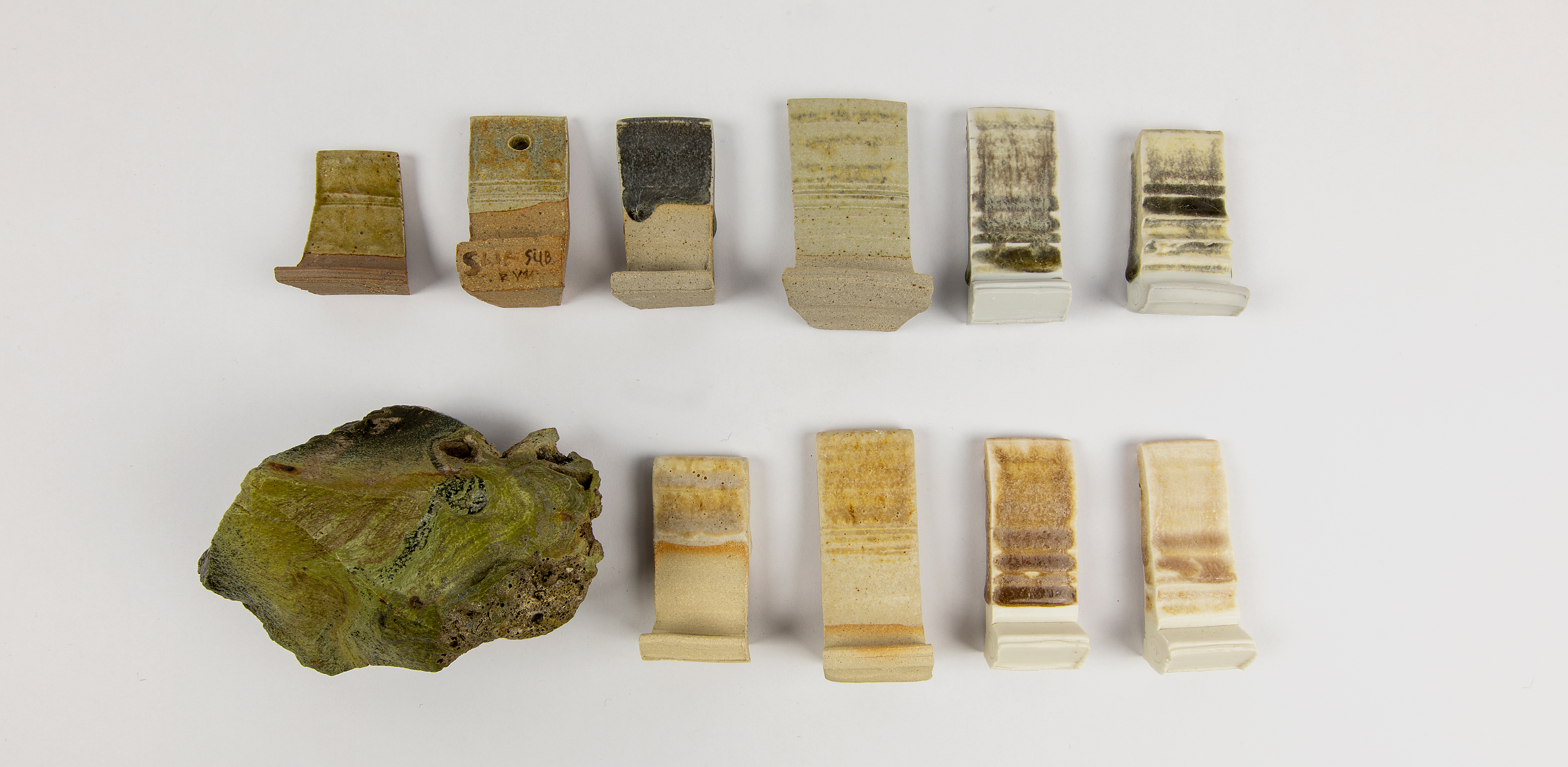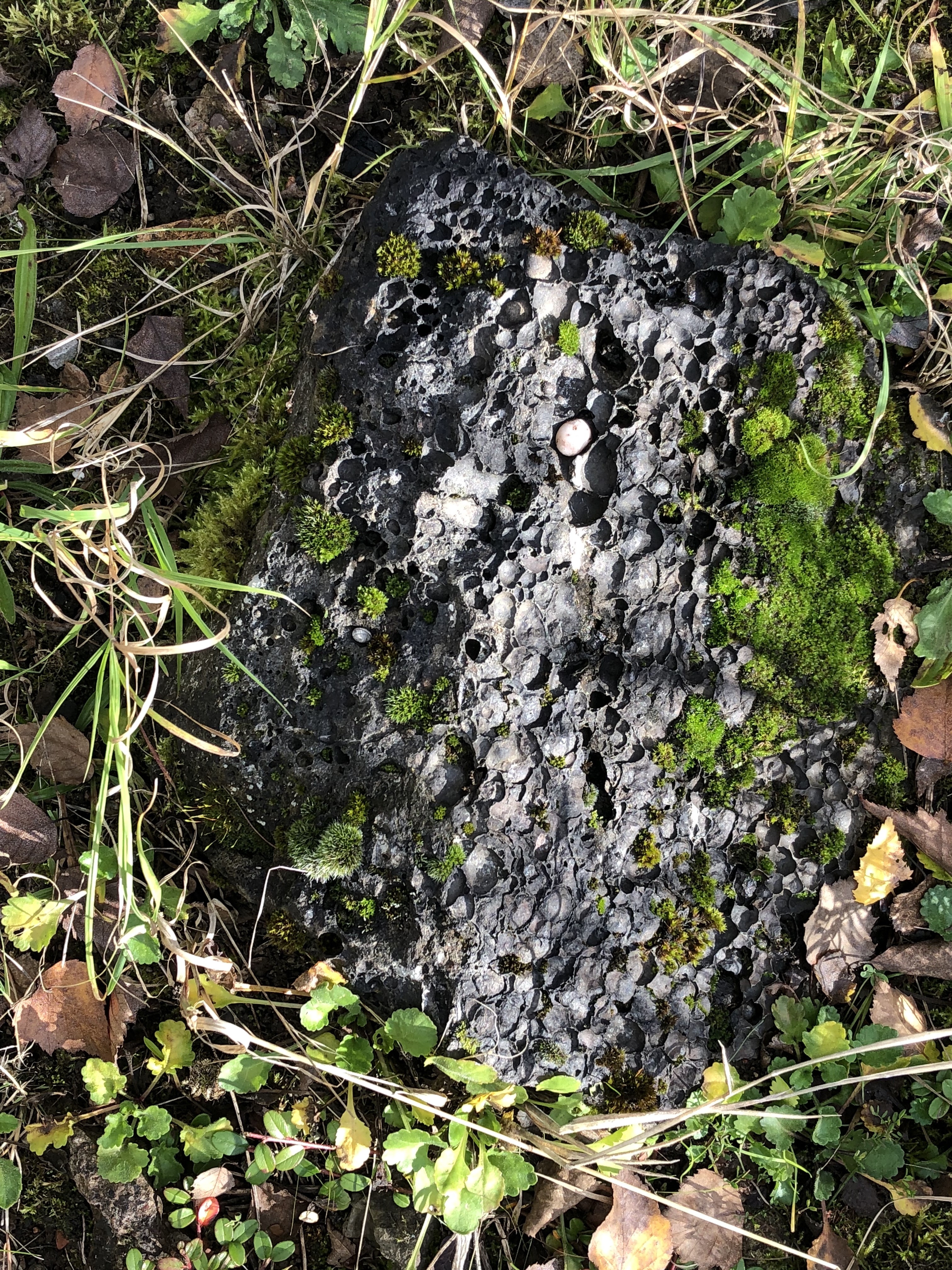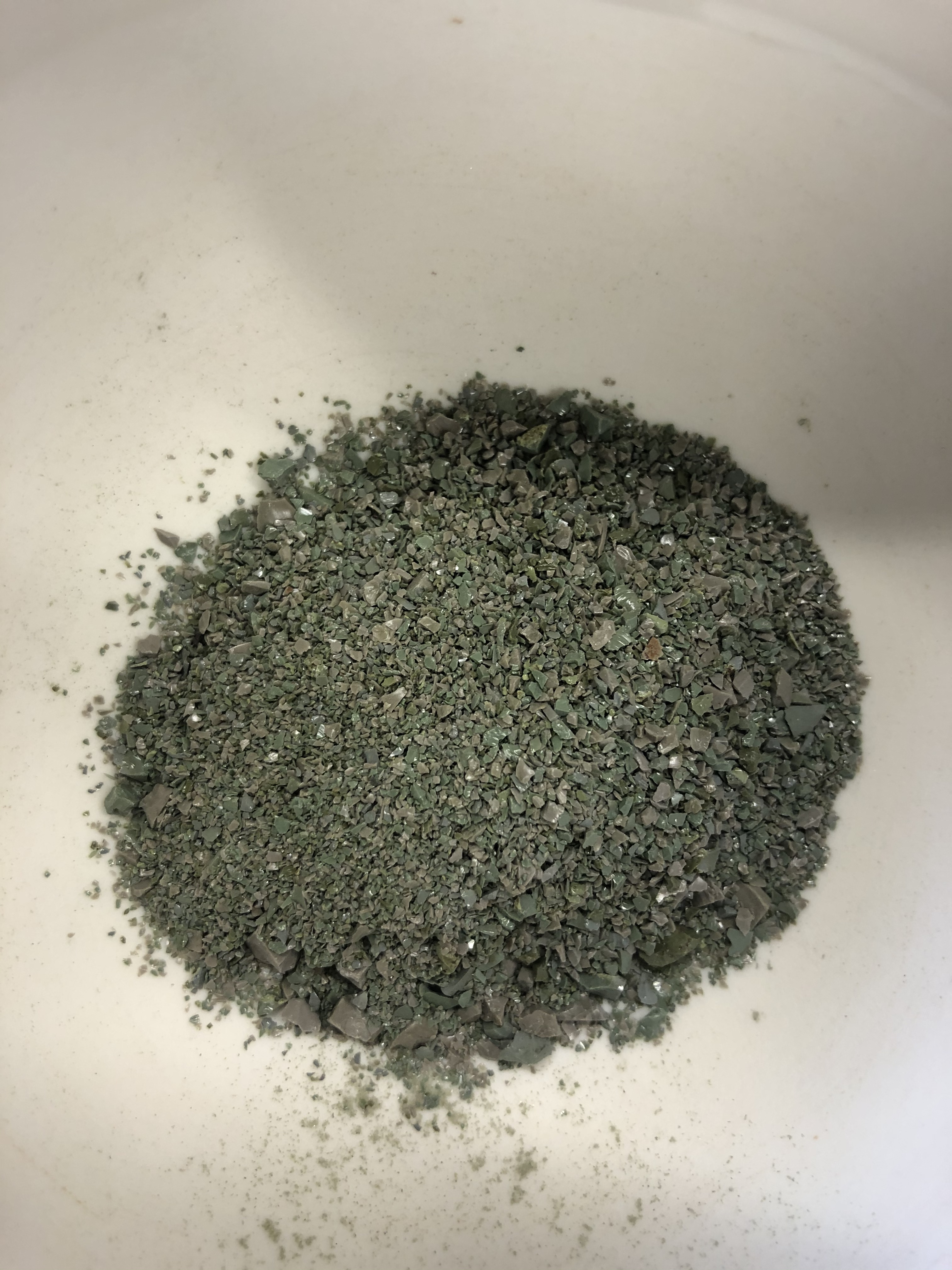COLLECTING / GRINING / TRANSFORMING / RE-USING SLAG WASTE GLAZE RESEARCH![]()

Slag is a material often sighted on brownfield sites in Stoke-on-Trent. It’s a by-product of steel production, or more specifically smelting iron. It’s created as a waste product in the process of separating metal from iron ore in a hot furnace and dumped in its molten state into the ground, where it cools quickly and cracks into strangely shaped, glassy fragments. Although a waste product, iron-smelting slag is a material of great potential for a ceramicist – it consists of mostly silica (or silicion dioxide), the main elelement of glass and therefore also ceramic glazes, and metal oxides, which in the smelting help to lower the melting temperature of the materials, but which are also the source of colour in glaze chemistry.



Since October 2020, I’ve been experimenting with slag collected from a in Etruria Valley, the former site of Shelton Steelworks. Small batches have been ground by hand with a hammer, pestle and mortar – a lengthy process due to silica’s hardness – and substituted in glazes for quartz or flint, usual sources of silica for a ceramicist. This process produced a variety of results from only one glaze recipe ( see the very top photo), partly because of how the material reacts to different clay bodies and firing environments ( the tests were fired in a reduction atmosphere in a gas kiln and an oxidation atmosphere in an electric kiln) but also because the small batches seem to substantially vary in composition.



As much as it is interesting to see variety, there remains a problem of achieving some level of consistency, which I believe is needed to present this waste material as a possible glaze ingredient. The only solution to this issue is grinding large batches of slag, which would only be possible with the use of a ball mill. Until that’s possible, the project remains in its testing stage, with batches large enough to glaze small objects like the porcelain cup here on the right.